- Details
- Hits: 3053
Station: Negaunee, MI
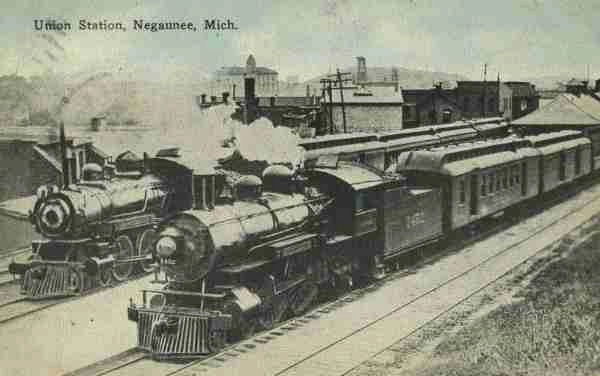
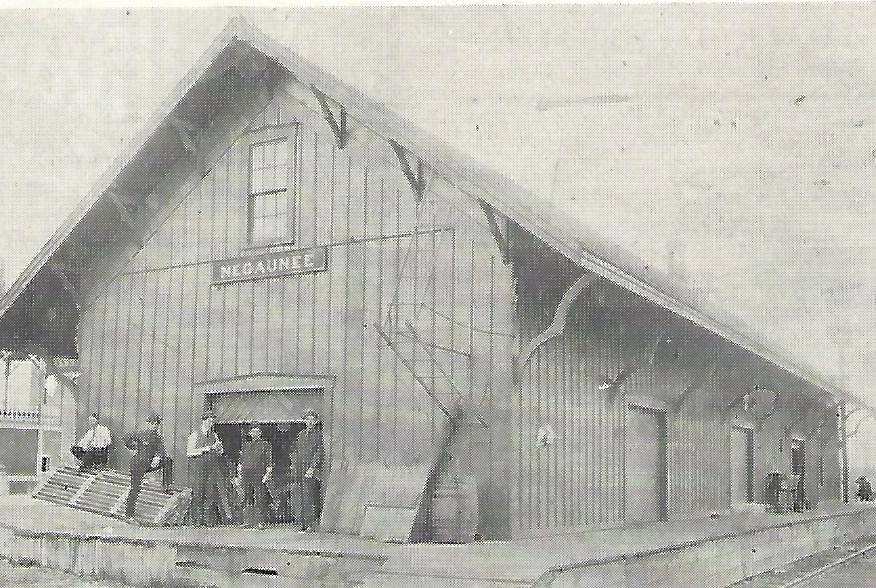
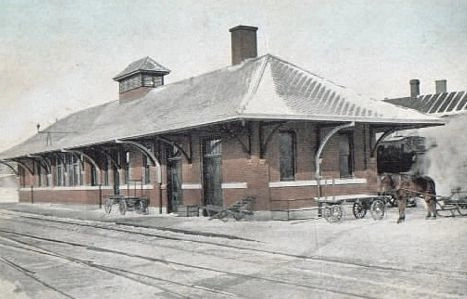
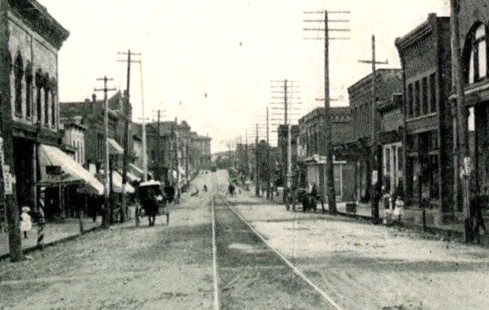
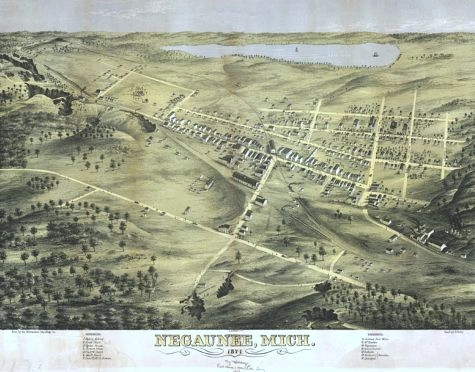
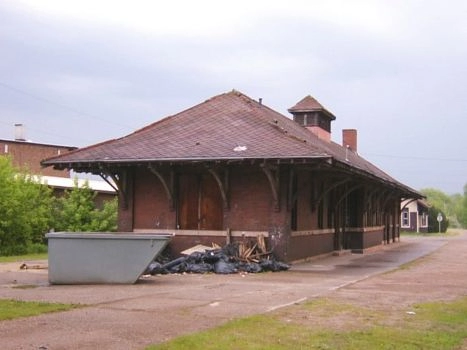
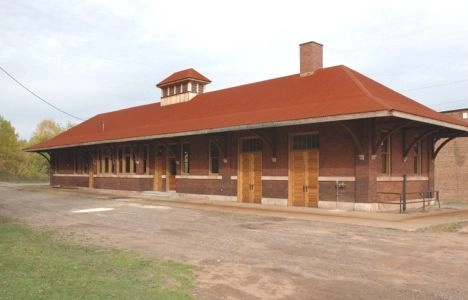
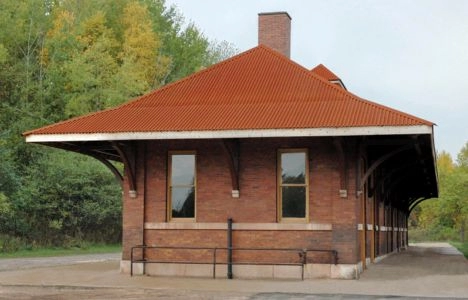
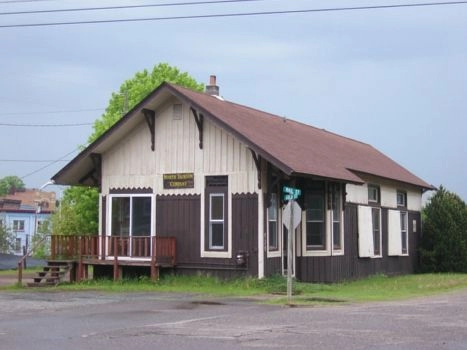 Negaunee was settled by the Jackson Iron Company about 1846. The Pioneer Furnace opened here in 1857 and the town was then called Negaunee. Negaunee became a village in 1865 and a city in 1873. [MP]
Negaunee was settled by the Jackson Iron Company about 1846. The Pioneer Furnace opened here in 1857 and the town was then called Negaunee. Negaunee became a village in 1865 and a city in 1873. [MP]
Negaunee was served by 4 railroads. The predecessor to the DSS&A located here early, along with the C&NW branch from Escanaba to Ishpeming in 1864. The Marquette & Western came through here in 1884, but was merged quickly into the DSS&A. The LS&I was the other railroad which came through Negaunee about 1895.
Photo Info: Top, Negaunee Union station around 1919 in a postcard view. 2nd photo, the original C&NW depot in 1864. [C&NW Historical Society] 3rd photo, Negaunee union station in an early view. [Alan Loftis collection]. 4th photo, a view of Iron Street in Negaunee with the street railway down the center, in 1910. 5th image, a "bird's eye" view of Negaunee in 1871. The viewpoint seems to be at the top of Jackson mountain (mine) looking north to Teal Lake. 6th photo, a 2003 view. [Greg Bunce]. 7th and 8th photos, the restored station in 2006. [Ann Kantola]. 9th photo, a 2003 view o the DSS&A freight house at Negaunee. This depot was the South Shore depot which preceded the brick station above. [Greg Bunce]
Notes
The DSS&A had a water tower in Negaunee, as did the Marquette & Western railroad.
MH&O Negaunee Station. The new MH&O Negaunee station east of Gold Street was built in 1880 to replace an earlier passenger station which burned in October, 1879. It is a rectangular frame building 22' wide and 90' long with a gabled roof and wide overhanging eaves. This combination passenger and freight facility contained an American Express office, an agent's office as well as a passenger waiting room and freight storage area. [UPM]
Negaunee Union Station. This joint station was built west of Gold and Rail Streets in 1910 by the Hood Contracting Company. It is a one-story pressed brick building with a hipped asbestos shingle roof resting on a concrete foundation. Inside was the general waiting room 53' by 15', a baggage room 21' by 20', Western Express and American Express offices each 17' by 11' and a women's waiting room 15' by 21'. It served the Duluth South Shore and Atlantic Railroad and the Chicago & Northwestern Railroad until it closed in 1965. [UPM]
M&W Depot. The Marquette & Western built their depot in 1884 south of the MH&O depot between Gold and Silver streets. This was a smaller depot and not used for passengers very long after the M&W merged with the MH&O. [CNWV]
Time Line
1878. January 2. A terribly fatal accident occurred about at 9:45 a.m. this morning near Negaunee by which seven men lost their lives and several others were slightly injured. The Lake Shore Nitroglycerine company was preparing a car-load of nitroglycerine at the Jackson Mine for shipment by railroad to the Republic mine, and while this was being loaded, the entire lot of 4,800 pounds exploded with a terrific crash, demolishing the car, engine and everything within a radius of 500 feet. The concussion shattered the glass of nearly all the stores in Ishpeming and Negaunee and all dwelling houses were left without a single window light unbroken.
The engineman, fireman, two brakemen and employees of Lake Shore were killed. Their remains were blown to atoms and scattered in all directions and are being picked up in small pieces; the largest piece being found thus far was no more than 1.5 pounds. What can be found of them will be placed in one coffin and buried together as there is nothing by which either can be recognized or identified. Great excitement prevails and business is at a stand still. Great sorrow is manifested in all quarters, as all the parties were widely known and universally respected. [SAG-1878-0110]
1883. Railroad Commissioner Innes has approved the much-controverted Negaunee railroad crossing. The result is that the Marquette & Western railroad track is to be raised and pass above that of the MH&O. (This became known as Iron Crossover). [PHTH-1883-1228] Ed. Note: The crossover was apparently built, but the M&W was sold to the MH&O about a year later and the crossover was soon dismantled. This crossover may have been known as the Iron Street Crossover.
1884. The iron bridge for the overhead crossing at Negaunee has arrived and goes into position this week. [DFP-1884-0429]
1906. March. The DSS&A begins using an electric train staff system between Eagle Mills and Negaunee. No trains can proceed in either direction without having obtained from the operator at the block house a train staff, giving them absolute right-of-way between the two stations. [DFP-0301]
1910. July 11. The DSS&A and C&NW agree to build a new Union Station west of Gold street with the C&NW moving their operations from their former passenger station at Silver and Iron streets. For a 14 month period, the C&NW used the DSS&A depot (east of Gold Street) until the new depot was placed into service. C&NW connecting tracks were built at this time from the C&NW’s Negaunee Yard. [CNWV]
1911. The C&NW depot at Silver and Iron Streets becomes a freight house. [CNWV]
1911. Tracks to the Pioneer Furnace in Negaunee are removed from the abandoned building. [CNWV]
1918. The DSS&A had an operators/telegraphers at their depot here around the clock. The C&NW had an agent operator here on the day shift. [TRT]
1935. Between 2,000 and 3,000 motor vehicles pass over the Silver and Gold street railroad crossings here daily, during which times drivers are likely to encounter from 31 to 43 trains going east or west, a survey conducted by the police department discloses. Saturday's survey showed 2,002 automobiles and 34 trains on Silver Street. [IDG-1935-0615] Note: A railroad grade separation was installed at a later time.
1937. August. The Cleveland-Cliffs company has practically completed its house-moving schedule for this summer. 29 homes were originally set as the quota to be moved this summer. The houses were located on the east end of Main, Case and Park streets and were transferred to a new location because they were in line with future mining operations. The new location was at the north side of the community east of Baldwin Kiln road between the LS&I railroad and US-41. [IDG-1937-0809]
1942. The Negaunee common counsel petitions the C&NW to operate the "400" all the way to Negaunee seven days a week. The railway company had discontinued the Escanaba to Ishpeming service one day a week, requiring citizens to drive to Escanaba to board the train. [EDP-1942-0621]
Bibliography
The following sources are utilized in this website. [SOURCE-YEAR-MMDD-PG]:
- [AAB| = All Aboard!, by Willis Dunbar, Eerdmans Publishing, Grand Rapids ©1969.
- [AAN] = Alpena Argus newspaper.
- [AARQJ] = American Association of Railroads Quiz Jr. pamphlet. © 1956
- [AATHA] = Ann Arbor Railroad Technical and Historical Association newsletter "The Double A"
- [AB] = Information provided at Michigan History Conference from Andrew Bailey, Port Huron, MI

